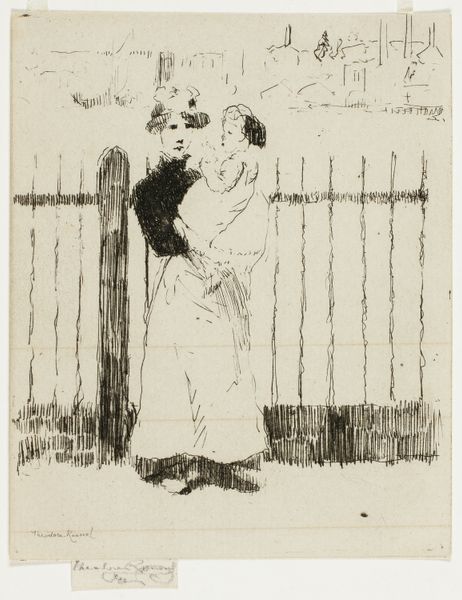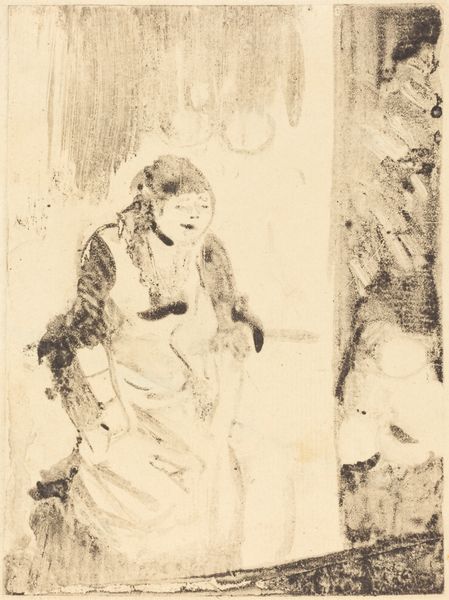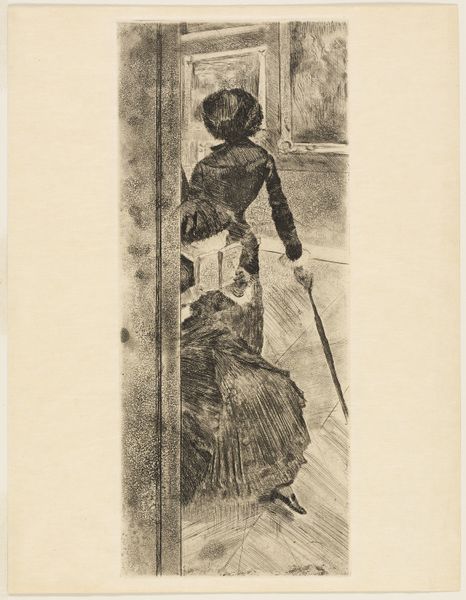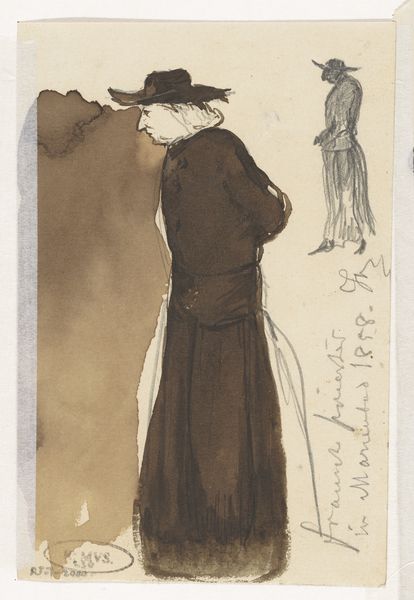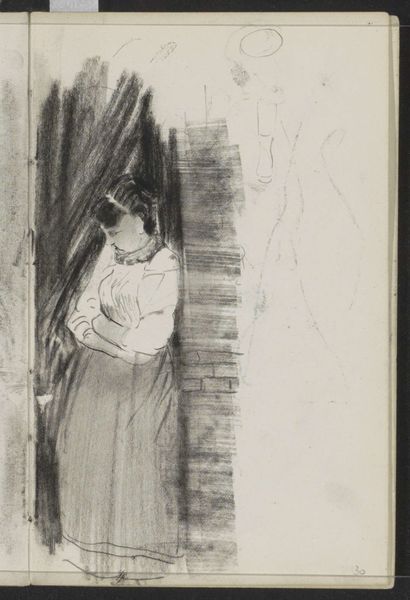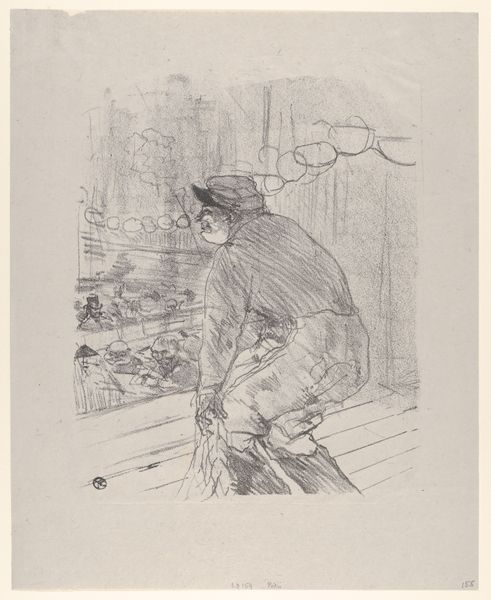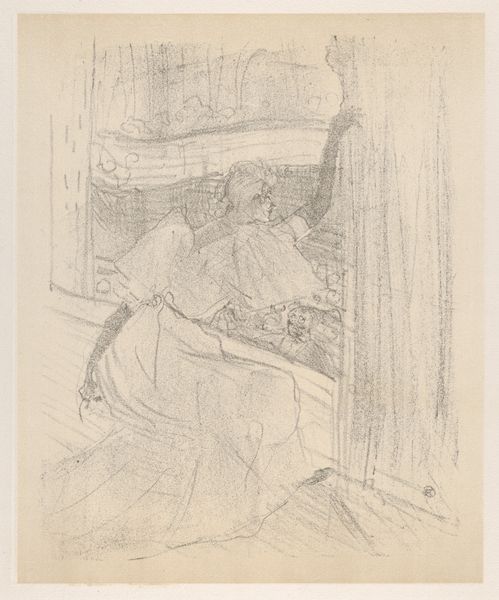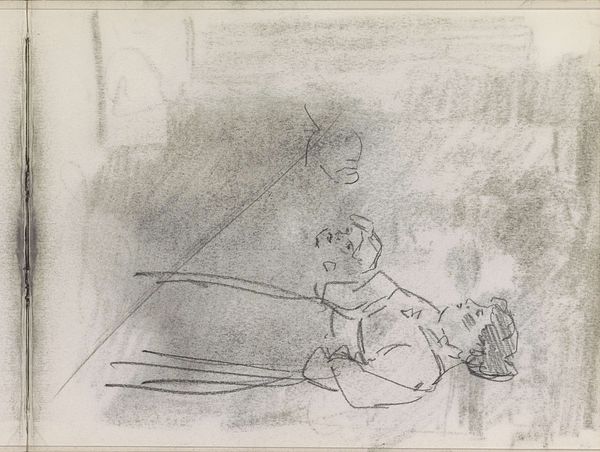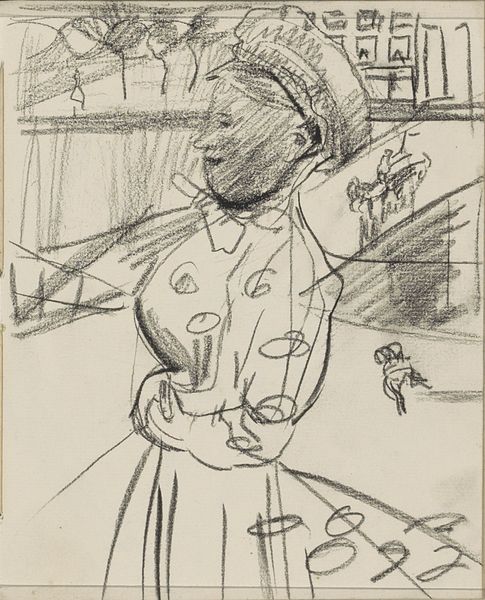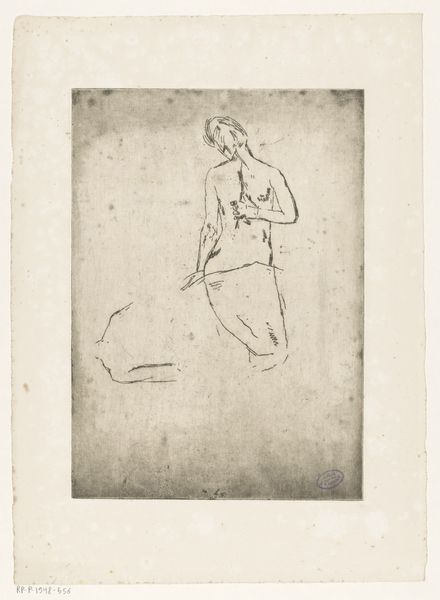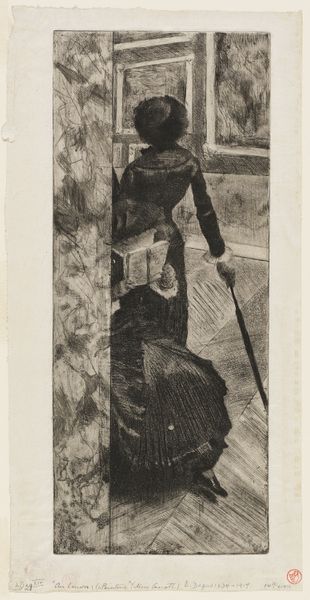
drawing, print, etching, paper, ink
#
portrait
#
drawing
# print
#
impressionism
#
pen sketch
#
etching
#
etching
#
paper
#
ink
#
genre-painting
Dimensions: 104 × 93 mm (image); 118 × 95 mm (plate); 330 × 248 mm (sheet)
Copyright: Public Domain
Curator: Theodore Roussel’s etching, "Emma and Her Baby, Chelsea Embankment," was created between 1888 and 1889. It is an ink print on paper that you can view here at the Art Institute of Chicago. What strikes you first about it? Editor: It has a melancholic feeling, perhaps because of the stark contrasts in black and white and the seeming loneliness of the figures. It looks so simple but evocative. Curator: Roussel was deeply involved in the printmaking revival of the late 19th century, emphasizing craftsmanship. He even mixed his own inks, experimenting with their chemical properties to achieve certain effects, sometimes hand-wiping the plates to produce a unique tone for each print. Note also the parallel vertical lines, achieved with carefully scored hatch marks, that render the fence and background in great detail. Editor: I’m curious about Emma. Given the setting and period, this work presents a very specific image of motherhood, probably lower middle class, and situated on the cusp of modernity as it was understood then. What would daily life have looked like for her? It provokes a range of thoughts around gender roles, class constraints, and maternal experiences. Curator: The Chelsea Embankment itself, part of London's extensive Victorian infrastructure project, offered a new kind of public space—cleaner, more structured. We see that play out in the geometry here, almost imposed on these more personal interactions of mother and child. Roussel often chose scenes from modern life for his prints. Editor: Considering Roussel's exposure to Impressionism and the aesthetics of Whistler, I wonder if the location also plays with the burgeoning anxieties of urbanization that informed late 19th century art and social discourse. Is this image, with its simplified style, about revealing or obscuring the lived reality of women during this transformative era? Curator: That’s a great way to contextualize this piece. The simplicity in its execution is also technically difficult, showing Roussel’s high skill level with etching. He plays with densities of lines, suggesting form and volume expertly despite using so little ink. Editor: Thanks for highlighting that, it's definitely something I will consider. These artistic representations really do help us analyze so much about our history.
Comments
No comments
Be the first to comment and join the conversation on the ultimate creative platform.
